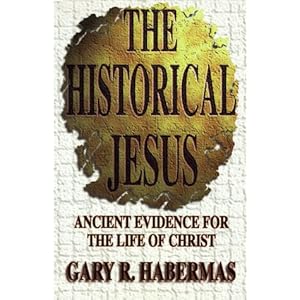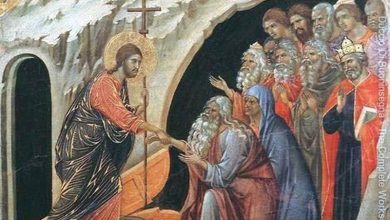A Demythologized Jesus-Gary Habermas

A Demythologized Jesus
From about 1930–1960, a popular view was that the Gospels do not present a historical record of Jesus, but a witness to early Christian belief. Since the writers were more concerned about faith and the application of the Christian message to daily concerns than about actual events in the life of Jesus, we know much less about the historical Jesus than the Gospels actually record.
The most influential version of such a view was popularized by Rudolf Bultmann, who held that the Gospels were essentially a later interpretation of Jesus’ person and teachings, largely in mythical terms. The early post-Easter faith allowed a free modification of the historical Jesus into a partially mythical figure. According to this theory, the Gospel writers used imagery to express spiritual concepts in mundane terms.
For instance, God’s transcendence might be described as immense spatial distance. Or God’s use of a miracle to control nature would really reveal his omnipotence. However, these mythical expressions were said to be literally meaningless today. The chief job for theologians, according to Bultmann, was to demythologize the Gospels by ascertaining what the writers were really trying to communicate and by reinterpreting it into a message that was existentially valid for twentieth century humanity.1
A major example was Bultmann’s treatment of the resurrection of Jesus, which was accomplished without a historical investigation of any sort. He concludes at the very outset, “Is it not a mythical event pure and simple? Obviously it is not an event of past history.”2
While the earliest disciples’ faith in the resurrection was a historical fact, it is not even important to know the cause of this belief.3 Thus, the historicity of the resurrection was rejected a priori as a myth, without any attempt to investigate the facts. Even the importance of such historical research was rejected. Because the early church was said not to have been interested in recording history, legend was mixed into the Gospel accounts. The result was that Bultmann thought there was much uncertainty concerning historical aspects of Jesus’ life and teachings.4
In his earlier writings, Bultmann expressed this conclusion quite strongly, such as his belief that “we can know almost nothing concerning the life and personalty of Jesus.”5 Still, there is no doubt that Bultmann accepted a number of historical facts concerning the life and message of Jesus, especially in his later writings.6 Bultmann’s view will be presented in Chapter 7, where we will list a number of historical facts that are even accepted by historical skeptics.
While the works of Rudolf Bultmann are probably the best known source for the position that little can be known about the historical Jesus, other critics have also held this view as well, including a number of his disciples. But as we said in Chapter 1, several reasons have accounted for the decline in the influence of this postion over the last thirty years. We will emphasize four important problems.
- Historical grounding needed
As already mentioned, Bultmann’s own disciples noted the initial problem with their mentor’s approach. By de-emphasizing the historical basis for the life of Jesus, Bultmann failed to provide both early and modern Christians with the grounding that is indispensable for the founding and present existence of the Christian faith. If no such factual support exists, then this critique is not entirely effective. But if Bultmann’s position was due more to a philosophical bias, which many thought was the case, and if there is a historical foundation, then he was mistaken to proclaim otherwise.
The New Testament often claims to be based on historically accurate accounts.7 Paul reminds us that, apart from a historical Gospel, there is no basis for faith whatsoever, since it would be vain and groundless (1 Cor. 15:1–20). The point here is that, without a historical core of knowledge concerning Jesus, Christianity would have little initial impetus to encourage faith in an otherwise unknown person.
This criticism was probably the single most influential contribution to the dissatisfaction with Bultmann’s thought. John Macquarrie, while supporting Bultmann in a number of areas, takes issue with him here:
It is very doubtful whether the Christian faith could have been built upon the foundation of a historic Jesus who, as Bultmann presents him, was little more than a teacher of a practical philosophy with certain resemblances to existentialism, and who is stripped of the numinous characteristics which the Gospels attribute to him.8
Many of Bultmann’s disciples agreed with this critique that there had to be some adequate historical knowledge of Jesus. We saw in Chapter 1 that the major thrust came from the “new quest for the historical Jesus” scholars like Ernst Käsemann, Gunther Bornkamm, and James Robinson.9 While they did not emphasize historical facts as the basis for faith, they did agree that, without such data, violence is done both to the apostolic kerygma (the kernel of their message) and to the present understanding of Jesus.10
Although Bultmann never endorsed the search for a historical Jesus, he was perhaps affected by some of these critiques, and in his later years he admitted more historical knowledge about Jesus.11 Christianity proclaimed a historical basis for its message. If an investigation reveals that such a basis exists, then these facts must have a more important function than Bultmann allowed.
- Assumption of myth
Second, the major problem for Bultmann in terms of this study is that he dismissed the historicity of Jesus’ resurrection without any investigation at all. Rather than consider the evidence, he simply rejected it a priori. Again it is Macquarrie, himself an eminent commentator on Bultmann’s thought, who sharply criticizes him on this point:
And here we must take Bultmann to task for what appears to be an entirely arbitrary dismissal of the possibility of understanding the resurrection as an objective-historical event.… The fallacy of such reasoning is obvious. The one valid way in which we can ascertain whether a certain event took place or not is not by bringing in some sweeping assumption to show that it could not have taken place, but to consider the historical evidence available, and decide on that.12
The problem is that Bultmann made his decision against the historicity of the resurrection apart from factual observation. Again it is Macquarrie who comments:
But Bultmann does not take the trouble to examine what evidence could be adduced to show that the resurrection was an objective-historical event. He assumes that it is myth.13
This is a crucial critique, because it just might be the case that the historical facts are enough to demonstrate the resurrection, but that Bultmann simply ignores what could provide an excellent basis for the Christian faith. Interestingly enough, we will argue below that the methodology of form criticism, which he popularized, even backfired into an argument for miracle-claims.
- Faulty historiography
The third problem with Bultmann’s methodology is that even contemporary historians oppose the form and redaction criticism that he popularized as the proper approach to New Testament studies. Whereas Bultmann’s use of these methods revealed the minimal historical results noted above, ancient historians have employed their normal patterns of investigation and found an adequate basis for history in the New Testament. Oxford ancient historian A.N. Sherwin-White leveled the following indictment at form critics:
So, it is astonishing that while Graeco-Roman historians have been growing in confidence, the twentieth-century study of the Gospel narratives, starting from no less promising material, has taken so gloomy a turn in the development of form-criticism … that the historical Christ is unknowable and the history of his mission cannot be written. This seems very curious.14
Sherwin-White asserts that the same standards that are commonly applied to ancient secular history can also be applied to the New Testament records, with the result that a factual account emerges. Michael Grant, another historian, likewise applies the techniques of normal historical methodology to the New Testament and also concludes that much can be known about the historical Jesus, in spite of the efforts of Bultmann, whose methodology Grant specifically rejects.15
Here an objection is often advanced. It is sometimes claimed that the New Testament authors cannot be compared to ancient secular writers, since the latter attempted to write history, while form critics hold that the biblical authors allowed their beliefs to significantly color their recording. To this challenge and to the larger issue of the form criticism advocated by Bultmann and others, Sherwin-White and Grant provide numerous responses.
(1) There are several examples of ancient historians like Herodotus, Livy, or Tacitus whose works show similarities in several respects to that in the Gospels, including a moralizing intent “which the evangelists would have applauded,” yet they are well accepted as historical. And even though there were differences, too, this does not keep us from discovering a good amount of factual material in the Gospels.16
(2) Literature of the sort the form critics believe the Gospels to be is not known elsewhere in ancient history. As Sherwin-White asserts, “We are not acquainted with this type of writing in ancient historiography.”17
(3) The Gospels are quite close to the period of time that they record, while ancient histories such as those by Plutarch and Livy often describe events that took place even centuries earlier. Yet, modern historians are able to successfully delineate data even from these early periods of time.18
(4) Ancient histories sometimes “disagree amongst themselves in the wildest possible fashion,” such as the four ancient sources for the figure of Tiberius Caesar, yet the history they record can still be ascertained.19 Another contemporary historian, Paul Maier, makes the same point in reference to the contradictory material in the sources for the great (first century AD) fire in Rome.20
(5) Form critics speak much of the experiences of the earliest disciples, but history looks for adequate causes behind these experiences.21
(6) Some portions of the New Testament, like the book of Acts, are confirmed by external indications of historicity.22
(7) The principles of form criticism do not preclude an important place for history in the Gospels. Although the primary interest of the Gospel writers was spiritual, history was also very important. There is no good reason why they would pervert the historical in order to preserve the spiritual, when both were so important and even complemented one another.23
Sherwin-White and Grant are examples of modern historians who have pointed out some of the many weaknesses in the form-critical method as espoused by Bultmann.24 Both scholars conclude that if the same criteria which are applied to other ancient writings are applied to the New Testament, we can delineate a historical basis for the life and teachings of Jesus.25
- Textual attestation
Our fourth critique is not really aimed specifically at Bultmann, but at any critics who would challenge the text of the New Testament, which measures exceptionally well against ancient classical works. This is especially the case in three areas: manuscript number, the time of the writing in relation to the time of the events described, and the completeness of the text. So, in addition to our previous subject concerning factual content, as noted by historians, the New Testament texts can be ascertained.
The New Testament is easily the best attested ancient writing in terms of the number of manuscripts. Ancient classical works have comparatively few manuscripts, with twenty entire or partial copies generally being an excellent number. By comparison, the New Testament has over 5000 copies. Such a wide difference would provide the New Testament with a much better means of textual criticism, which is crucially important in ascertaining the original readings.26
Perhaps the strongest manuscript evidence concerns the date between the original and the earliest copy. For most of the ancient classical works, a gap of only 700 years would be excellent, while 1000–1400 years is not at all uncommon. By comparison, the Chester Beatty Papyri and Bodmer Papyri contain most of the New Testament and are dated about 100–150 years after its completion. An entire copy of the New Testament (Codex Sinaiticus) and a nearly complete manuscript (Codex Vaticanus) date only about 250 years after the original autographs. Such early dates for the New Testament help to insure its authenticity.27
Additionally, while we have the entire New Testament text, this is not the case with every ancient work. For instance, of the 142 books of Roman history written by Livy, 107 books have been lost! Only four and a half of Tacitus’ original fourteen books of Roman Histories remain in existence and only ten full and two partial books remain from the sixteen books of Tacitus’ Annals. In contrast, each New Testament book is complete, which is also a factor in establishing the authenticity of these writings.28
The fact that the New Testament is so well-attested is seldom even disputed by critics. In a two-volume work dedicated to his former teacher Rudolf Bultmann, Helmut Koester summarizes nicely the excellent state of the text:
Classical authors are often represented by but one surviving manuscript; if there are half a dozen or more, one can speak of a rather advantageous situation for reconstructing the text. But there are nearly five thousand manuscripts of the NT in Greek, numerous translations that derive from an early stage of the textual development, and finally, beginning in II CE, an uncounted number of quotations in the writings of the church fathers.… the manuscript tradition of the NT begins as early as the end of II CE; it is therefore separated by only a century or so from the time at which the autographs were written. Thus it seems that NT textual criticism possesses a base which is far more advantageous than that for the textual criticism of classical authors.29
Other critiques could be raised against Bultmann’s form-critical approach to the Gospels. For instance, some have noted his outdated, nineteenth century view of science that causes him to refer to anything which does not fit his system as “myth.”30 Others note that he is also dated in his heavy reliance on Hellenistic influences for much of the New Testament teaching, instead of turning to the now demonstrated Jewish milieu.31 One serious claim is that his lack of emphasis on the historicity of Jesus qualifies his system as a type of twentieth century gnosticism.32
Some even believe that Bultmann’s lack of emphasis on the historical Jesus leaves him in the precarious position of having to demythologize Jesus himself in order to be logical.33 Additionally, an entire host of other historical and textual problems could be raised against these and other critical approaches to the New Testament text.34
Nonetheless, these four major critiques of Bultmann and others who employ more radical versions of form and redaction criticism are sufficient to show that these methods are unsuccessful in pre-empting an historical approach to Jesus. The lack of an adequate historical basis for Christian faith, the improper dismissal of supernatural claims such as Jesus’ resurrection, historical problems with radical form and redaction criticism, and the reliability of the New Testament texts all argue against such approaches. Many other criticisms could be added to the list, contrary to efforts that minimize the historical facts in the life of Jesus.
1 Bultmann, Jesus Christ and Mythology, pp. 16–21, 35–38.
2 Bultmann, “New Testament and Mythology,” p. 38.
3 Ibid., p. 42. Bultmann expresses the same view in his Theology, vol. I, p. 45.
4 Bultmann, “The Study of the Synoptic Gospels,” pp. 60–61, 64, 72.
5 Rudolf Bultmann, Jesus and the Word, transl. by Louise Pettibone Smith and Erminie Huntress (New York: Scribner’s, 1934), p. 8.
6 Bultmann, Theology, vol. I, chapter I in particular.
7 For some instances, see Luke 1:1–4; John 1:14; 20:30–31; Acts 2:22–38; 17:30–31; Heb. 2:3–4; 2 Pet. 1:16–18; 1 John 1:1–3.
8 John Macquarrie, An Existentialist Theology: A Comparison of Heidegger and Bultmann (New York: Harper and Row, 1965), p. 23.
9 For details, see “The New Quest for the Historical Jesus” in Chapter 1.
10 For an excellent treatment of this issue, see Carl F.H. Henry, Frontiers in Modern Theology (Chicago: Moody, 1965), pp. 15–24.
11 See Ibid., pp. 21–22 for an interview with Bultmann, where he lists some of these historical facts.
12 Macquarrie, Existentialist Theology, pp. 185–186.
14 A.N. Sherwin-White, Roman Society and Roman Law in the New Testament (London: Oxford Univ. Press, 1963), p. 187.
15 Michael Grant, Jesus: An Historian’s Review, especially pp. 175–184, 198–201.
17 Sherwin-White, Roman Society, p. 189.
20 Paul Maier, First Easter: The True and Unfamiliar Story (New York: Harper and Row, 1973), p. 94.
21 Grant, Jesus: An Historian’s Review, pp. 181–182.
22 Sherwin-White, Roman Society, p. 189. Throughout this volume, Sherwin-White investigates various claims in the book of Acts.
24 For more complete data concerning these points of critique, see Sherwin-White, Roman Society, pp. 186–193 and Grant, Jesus: An Historian’s Review, especially p. 180–184.
25 Sherwin-White, Ibid., pp. 186–187; Grant, Ibid., pp. 199–200.
26 See F.F. Bruce, The New Testament Documents: Are They Reliable? (Grand Rapids: Eerdmans, 1967), especially p. 16; John A.T. Robinson, Can We Trust, especially p. 36.
27 Bruce, Documents, pp. 16–18; John A.T. Robinson, Can We Trust, pp. 36–37; Daniel-Rops, Sources, pp. 41–42.
28 Bruce, Documents, p. 16; Robinson, Can We Trust, pp. 37–38.
29 Koester, Introduction, vol. 2, pp. 16–17.
30 Macquarrie, Existentialist Theology, p. 168; Gordon H. Clark, “Bultmann’s Three-Storied Universe” in Christianity Today, ed. by Frank Gaebelein (Westwood: Revell, 1966), pp. 218–219.
31 Carl F.H. Henry, “Cross-Currents in Contemporary Theology,” in Jesus of Nazareth: Saviour and Lord, ed. by Carl F.H. Henry (Grand Rapids: Eerdmans, 1966), p. 15; Clark, “Bultmann’s Universe,” pp. 217–218.
32 Avery Dulles, “Jesus of History and Christ of Faith” in Commonweal, Nov. 24, 1967, pp. 225–232.
33 Schubert Ogden, Christ Without Myth (New York: Harper and Row, 1961).
34 For an excellent treatment of the general trustworthiness of the Gospels, see Craig Blomberg, The Historical Reliability of the Gospels (Downers Grove: InterVarsity, 1987). Part Two specifically addresses the efforts of recent forms of criticism.
[1]Habermas, G. R. (1996). The historical Jesus: Ancient evidence for the life of Christ. Rev. ed. of: Ancient evidence for the life of Jesus. (47). Joplin, MO: College Press Publishing Company.


